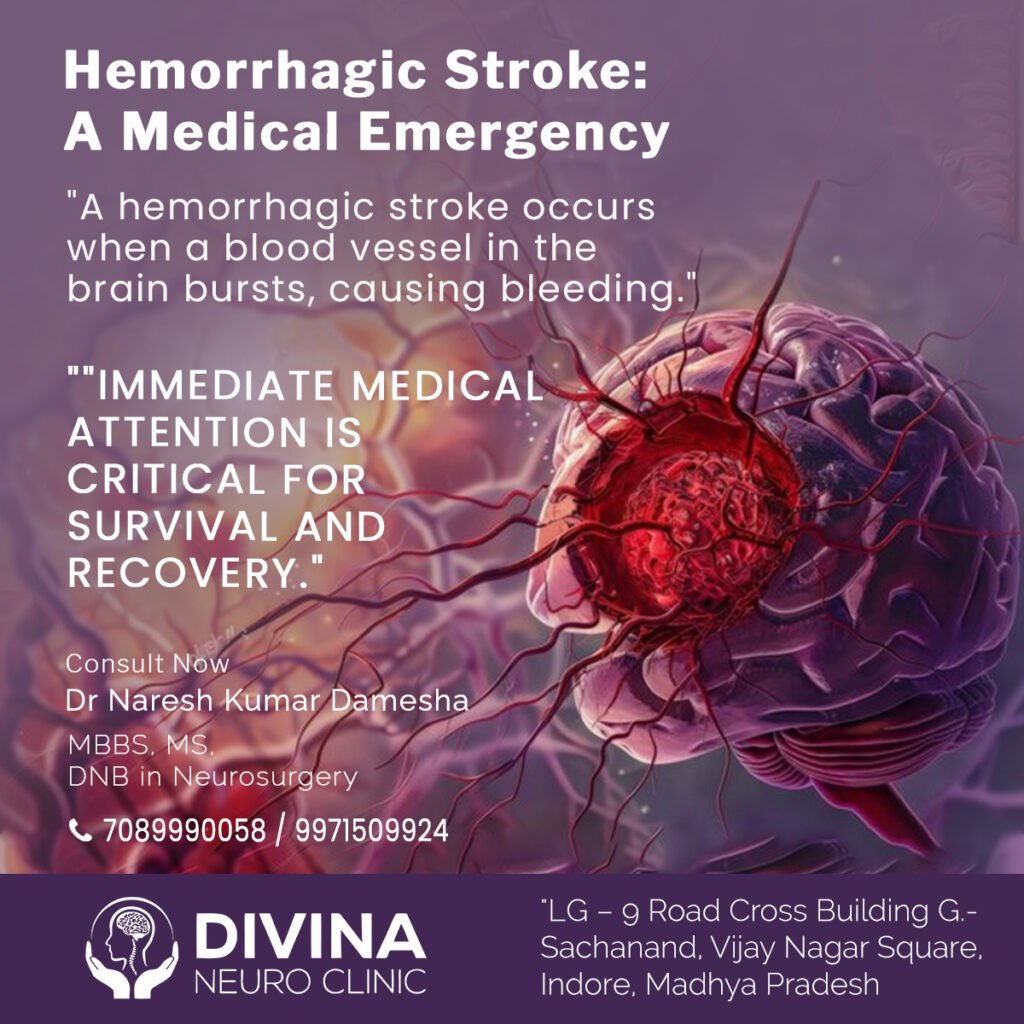What is Hemorrhagic Stroke?, Causes, Symptoms, Treatment
What is Hemorrhagic Stroke?
A hemorrhagic stroke occurs when a blood vessel inside the brain bursts, leaking or bleeding freely into the surrounding brain tissues. This can kill nearby cells and detectors within the brain and can reduce the capability of certain parts of the brain to function.
Hemorrhagic strokes are less common than other types of strokes; however, they can be more dangerous. If anyone experiences or notices in others the symptoms of a stroke, he/she must immediately seek medical help.
The earlier a stroke is treated, the better the patient’s chances of recovery are. Indeed, hemorrhagic strokes are serious; however, with timely treatment, people sometimes can recover.

Causes of a Hemorrhagic Stroke
The causes of a hemorrhagic stroke are as follows:
- Hypertension: This increases tension within the blood vessels and thus the tendency of bursting.
- Aneurysm: A weak spot in a blood vessel that balloons out and might burst and bleed.
- Medications that are anticoagulants: Some medications can decrease coagulation and may increase bleeding risks.
- Brain tumor: This can also be bleeding where there is an abnormal growth in the brain.
Symptoms of Hemorrhagic Stroke
Symptoms of a hemorrhagic stroke can be very sudden and may include:
- Acute headache.
- Weakness or numbness of one side of the face, arm, or leg.
- Difficulties of speech or incomprehension.
- Vision problems.
- Loss of balance or coordination.
- Nausea or vomiting.
Treatment of Hemorrhagic Stroke
Treatment for hemorrhagic stroke usually depends on the extent of bleeding and the overall condition of the patient. Common treatments include:
- Care: This is an injury that requires immediate medical attention. First, there is the need to stop the bleeding and prevent damage to the brain.
- Surgery: Sometimes, one needs surgery to remove the blood clot or repair the ruptured blood vessel. Medications: Doctors might prescribe medications that reduce blood pressure to prevent further bleeding.
- Medical Management With Observation: We use the medical management process only when clot size is small and does not cause a mass effect.
- Rehabilitation: This may come after the disease has been treated and includes physical therapy, speech, and occupational therapy that could help the patient regain lost abilities. Restoring mobility, speech, and daily functions through physical therapy, occupational therapy, and speech therapy.
Dr. Naresh Kumar Damesha
Consulting Neurosurgeon

Leave a Reply